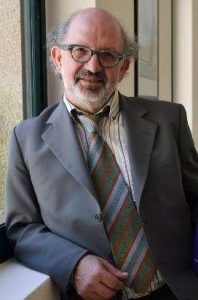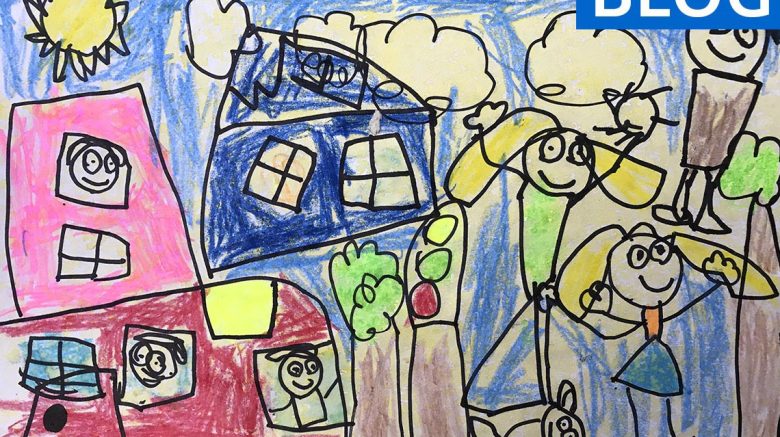To educate a small child, the whole tribe is needed
(Maasai saying).
If we speak about our times, no matter the topic, we cannot avoid the pandemic we have suffered and the many misfortunes that came with it. There were misfortunes, certainly, but there was also learning, and there was one in particular: knowing what is important. Health, for example. Family, relationships, being able to work without fear, and education… Even if it was incidental, we had the opportunity to prove that every country reasserts the importance of keeping schools open to enable the life and running of all social sectors. It has also been proved that health and education can, and must, go hand in hand. It is now evident that schools play an important social role and that their function goes way beyond the purely academic role they are recognized for. At school, children learn and are taught, certainly, but beyond that, at school, children live and coexist, they care for their bodies and their relationships. They feel comfortable.
An aspect that shows the evolution of the “social idea” in terms of childhood education has to do with the role granted to it by families (the ones who want to enroll their small children at school), that is, why do they think that children go to school? It is clear that this is a matter mostly related to pedagogy and culture, and that is why, in this aspect, changes happen more slowly and there are many contradictions and setbacks in the progress.
Except for those institutions related to care and “daycare”, whose primary function seems to be anticipated in their name (caring for children, looking out for them while their parents work or using school time to offer children a life context more adequate to their needs in terms of hygiene, food or good treatment), we could say that, in general, the instruments for childhood education were meant to be “academic”.
In fact, if we look back to the history of young children’s education, when people started thinking about providing formal education for them, it was from a perspective meant to “prepare them” for compulsory education. That is why this phase is presented as a pre-school stage, to prepare children for compulsory education. In the 70s, people started revising this idea and adding to it particular characteristics that are specific to working with small children: it has its own role and it’s not just preparing for future academic stages. It is based on the idea that the first years of children’s lives are a fundamental moment in their development; therefore, we can conclude that those are essential years to enhance the general development of children through a specific institutional action. As a result, we have overcome these approaches to education as “care” or as a simple “way to prepare them for a future level” and this stage of childhood education receives its own identity that includes a specific curriculum, specialized professionals, and different institutions.
It is then when the first controversies appear in terms of the role of care for young children. What is the axis on which social commitment should work when it comes to them: care or education? LOGSE opted for the educational approach and added it as a key element for children’s development. LOCE went back to the preschool idea and added the care component as a priority during the 0-3 phase and as complementary during the 3-6 phase. LOE brings back the component of education and uniformity of this stage.
However, things are never black and white. We have to look for nuances. Sometimes, the nuances are merely linguistic (for example, is it the same thing to talk about the educational component and the academic component?) but, in general, it is about deeper issues that affect the way we conceive and carry out the supply of instruments and resources available to childhood.
In countries like Spain, we are very used to thinking of young children’s care in terms of schools or centers (daycares or nursery schools). But that entails a clearly restrictive view. In comparison to the great variety of care available in other countries, other schooling models, like the Spanish one, usually offer fewer options. Besides, since they depend more on factors determined by the educational administration, such as timetables, school location, regulations related to the setting, professionals, resources available, among others, children’s care has to be balanced along with other priorities: teacher’s worker rights, school culture, centers’ location, among others.
Therefore, we could say that in other countries, among which are all those with policies on childhood care based on the CARE model, there is a great variety of instruments that are meant to meet children’s needs, while the situation in Spain is more linear: daycares or nursery schools. Those are the only options available. Clearly, there are other types of care within their homes from their families, but this alternative does not exist formally as something different from actual family care, that is to say, this is not something that Administrations support through specific measures and resources.
In 1995, the Council of Europe’s group study in charge of assessing and predicting the situation of Childhood Education in Europe submitted their report: A Review of Services for Young Children in the European Union: 1990-1995. One of their recommendations highlighted the need to combine both approaches, Care and Education, into one approach that incorporates both: Educare. Actually, when we talk about Childhood Education in an international context, the term we use is Early Childhood Education and Care. And the most common term is childcare.
For this reason, it is more convenient to talk about childhood policies. Nursery schools can be a key element in these policies, but there must be other actors that address the multiple dimensions in which the children’s and the families’ demands and needs are presented. These demands are related to healthcare, nurture, leisure, facilitating gender equality, integrating women into the workforce and the standard of living in general. All this requires childhood policies that go beyond mere schooling.
In my opinion, this is the great challenge we face when it comes to Childhood Education in this century: we must achieve a social network that is sensitive to childhood needs and that is willing to participate in a collective project that allows for the healthy and prosperous development of our children. As Bondioli and Orsola have accurately pointed out: Children’s right to education is not a problem prominently private that should be solved within the family, neither is it something that the family can pass on to the education or the welfare systems. It is a public matter that affects the whole civil society and not just the families that have children. It is, therefore, a public matter that involves those who are responsible for childhood policies (La calidad negociada).

Miguel Zabalza is a Doctor of Psychology (1979), a Bachelor of Education (1973) and a Diploma in Criminology from the Complutense University of Madrid (1978). He has been a professor at the Complutense universities of Madrid, Comillas, UNED and, for 26 years, he teaches at the University of Santiago de Compostela, currently as Professor of Didactics and School Organization. He has held various positions at the University: Dean of the Faculty of Educational Sciences; Director of the Institute of Educational Sciences; Director of the Department, Member of the Senate and of the Governing Board of the University, Member of the Quality Commission. President of AIDU (Ibero-American Association of University Didactics). He is part of the Executive Committee of the RED-U (University Teaching Network) and of the Editorial Board of his magazine. In recent years, he was a Member of the Executive Committee of EECERA (European Early Childhood Educational Research Association) of the Editorial Board of EECERJ (European Early Childhood Educational Reserach Journal). Member of the Editorial Board of BORDON magazine. Principal Investigator of 25 Research Projects of national and international scope and author (or co-author) of more than 100 books, some of them translated into several languages (Italian, French, Portuguese, Basque). Among them, the best known are: Curriculum design and development (currently in the 9th edition); University teaching. The stage and its protagonists (2002); The teaching competencies of university teachers. Quality and professional development (2003) He has promoted the publication in Editorial NARCEA of the UNIVERSITY Collection as “a joint space for meeting and debate on issues of University Didactics”.

